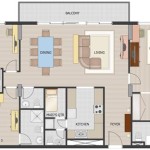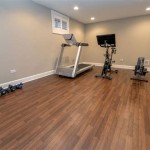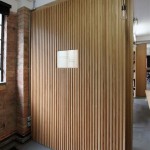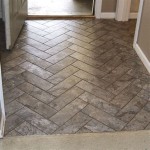Vinyl Floor Rugs and Mats: A Comprehensive Guide
Vinyl floor rugs and mats have emerged as versatile and practical solutions for enhancing the aesthetics and functionality of various spaces. This comprehensive guide explores the diverse types, benefits, applications, and maintenance aspects of vinyl floor coverings, providing a thorough understanding of their role in modern interior design and practical flooring solutions.
Understanding Vinyl Composition and Manufacturing
Vinyl, or polyvinyl chloride (PVC), is a synthetic plastic polymer widely used in the production of floor coverings due to its durability, water resistance, and cost-effectiveness. The manufacturing process typically involves combining PVC resins with plasticizers, stabilizers, and pigments. Plasticizers enhance flexibility, stabilizers improve resistance to heat and UV degradation, and pigments provide color and design options.
The mixture is then processed through calendaring or coating techniques to create sheets or tiles of varying thicknesses. Calendaring involves passing the mixture through a series of heated rollers to achieve the desired thickness and texture. Coating techniques involve applying a liquid vinyl mixture onto a backing material, followed by curing to solidify the coating. Embossing can be employed to create textured surfaces that mimic natural materials like wood or stone.
Modern vinyl flooring often incorporates multiple layers for enhanced performance. A wear layer, typically made of clear vinyl or a urethane coating, provides resistance to scratches, stains, and scuffs. A print layer displays the design or pattern, while a core layer provides structural stability and cushioning. Some vinyl floors also include a backing layer for added comfort and sound insulation.
Types of Vinyl Floor Rugs and Mats
Vinyl floor coverings are available in a wide range of formats to suit different needs and applications. The primary types include sheet vinyl, vinyl tiles, and vinyl planks.
Sheet Vinyl: Sheet vinyl is sold in large rolls, typically 6 to 12 feet wide, allowing for seamless installation across entire rooms. This minimizes the number of seams, reducing the risk of water penetration and creating a more uniform appearance. Sheet vinyl is often used in bathrooms, kitchens, and laundry rooms due to its excellent water resistance. It comes in a variety of designs, including realistic reproductions of wood, stone, and tile.
Vinyl Tiles: Vinyl tiles are individual squares or rectangles that are installed one at a time. They offer greater design flexibility, allowing for custom patterns and borders. Vinyl tiles are available in various sizes, thicknesses, and styles, including solid color tiles, patterned tiles, and luxury vinyl tiles (LVT) that mimic natural materials. Some vinyl tiles are self-adhesive, while others require adhesive for installation.
Vinyl Planks: Vinyl planks are long, narrow strips that resemble hardwood flooring. They are typically installed using a click-lock system, which eliminates the need for adhesive. Vinyl planks offer the look of wood with the added benefits of water resistance, durability, and ease of maintenance. They are a popular choice for living rooms, bedrooms, and hallways.
Beyond these primary types, specialized vinyl rugs and mats cater to specific needs. These include anti-fatigue mats for kitchens or workshops, entrance mats for trapping dirt and moisture, and decorative rugs for adding style to any room. The versatility of vinyl allows for endless design possibilities, making it a popular choice for both residential and commercial applications.
Benefits of Using Vinyl Floor Rugs and Mats
Vinyl floor rugs and mats offer a multitude of advantages, making them a compelling choice for various applications. These benefits include durability, water resistance, ease of maintenance, design versatility, and cost-effectiveness.
Durability: Vinyl is known for its exceptional durability. It can withstand heavy foot traffic, scratches, and impacts, making it ideal for high-traffic areas. The wear layer protects the underlying design from damage, ensuring that the floor maintains its appearance for many years. High-quality vinyl floors can last for 10 to 20 years or more with proper maintenance. This durability makes vinyl a cost-effective flooring solution in the long run.
Water Resistance: Vinyl is inherently water-resistant, making it suitable for use in kitchens, bathrooms, and laundry rooms. Unlike hardwood or laminate flooring, vinyl does not absorb water, preventing swelling, warping, and mold growth. Sheet vinyl, with its seamless installation, offers the best protection against water damage. Even vinyl tiles and planks, when properly installed, provide excellent water resistance. This property makes vinyl a practical choice for areas prone to spills and moisture.
Ease of Maintenance: Vinyl floors are easy to clean and maintain. Regular sweeping or vacuuming is sufficient to remove dirt and debris. Spills can be easily wiped up with a damp cloth or mop. For deeper cleaning, a mild detergent can be used. Vinyl does not require sealing or waxing, reducing ongoing maintenance costs and effort. Its stain resistance also helps to keep floors looking clean and new for longer.
Design Versatility: Vinyl floor coverings are available in a vast array of colors, patterns, and textures. They can mimic the look of natural materials like wood, stone, and tile, allowing for endless design possibilities. Embossing techniques can create realistic textures that enhance the visual appeal. Vinyl can also be customized with unique patterns and designs, making it a versatile choice for any interior style. Whether you prefer a classic, modern, or eclectic look, vinyl can be tailored to meet your needs.
Cost-Effectiveness: Vinyl is generally more affordable than other flooring options, such as hardwood, stone, or ceramic tile. The lower material costs, combined with relatively easy installation, make vinyl a budget-friendly choice. The durability and low maintenance requirements of vinyl also contribute to its cost-effectiveness over the long term. While luxury vinyl options may have a higher upfront cost, they often offer enhanced durability and design features that justify the investment.
Applications of Vinyl Floor Rugs and Mats
The versatility of vinyl floor coverings makes them suitable for a wide range of applications in both residential and commercial settings. From kitchens and bathrooms to offices and retail spaces, vinyl provides a practical and aesthetically pleasing flooring solution.
Residential Applications: In homes, vinyl is commonly used in kitchens, bathrooms, laundry rooms, and basements. Its water resistance makes it ideal for areas prone to moisture. Vinyl planks and tiles are also popular choices for living rooms, bedrooms, and hallways, offering the look of hardwood with added durability and ease of maintenance. Vinyl rugs and mats can be used to protect floors in high-traffic areas, add style to any room, or provide cushioning in kitchens and workshops.
Commercial Applications: In commercial settings, vinyl is often used in offices, retail stores, healthcare facilities, and schools. Its durability and ease of maintenance make it suitable for high-traffic areas. Vinyl sheet flooring is often used in healthcare facilities due to its seamless installation, which reduces the risk of bacterial growth. Vinyl tiles and planks can be used to create stylish and durable floors in retail stores and offices. Anti-fatigue mats made of vinyl are commonly used in kitchens and workshops to provide comfort and reduce strain on the feet and legs.
Specialized Applications: Vinyl floor coverings are also used in specialized applications, such as in vehicles, boats, and recreational spaces. Their water resistance and durability make them suitable for these demanding environments. Vinyl can also be used for wall coverings, providing a durable and easy-to-clean surface. Its versatility and adaptability make vinyl a valuable material for a wide range of applications.
Installation and Maintenance of Vinyl Floor Coverings
Proper installation and maintenance are crucial for ensuring the longevity and performance of vinyl floor coverings. Following the manufacturer's instructions and implementing a regular cleaning routine can help to keep your vinyl floors looking their best for many years.
Installation: The installation process varies depending on the type of vinyl flooring. Sheet vinyl requires careful measurement and cutting to ensure a proper fit. It is typically glued down to the subfloor using a special adhesive. Vinyl tiles and planks can be installed using either adhesive or a click-lock system. Click-lock systems are easier to install and do not require adhesive, making them a popular choice for DIY projects. Proper preparation of the subfloor is essential for a successful installation. The subfloor should be clean, level, and dry. Any imperfections should be repaired before installing the vinyl flooring. Professional installation is recommended for complex projects or when working with sheet vinyl.
Maintenance: Regular maintenance is essential for keeping vinyl floors clean and attractive. Sweeping or vacuuming should be done regularly to remove dirt and debris. Spills should be wiped up immediately with a damp cloth or mop. For deeper cleaning, a mild detergent can be used. Avoid using harsh chemicals or abrasive cleaners, as they can damage the wear layer. Do not use excessive amounts of water, as it can seep into the seams and cause damage. Vinyl floors do not require sealing or waxing. Placing mats at entrances can help to trap dirt and moisture, reducing wear and tear on the flooring. Using furniture pads under heavy furniture can prevent scratches and dents.
By following these installation and maintenance guidelines, you can ensure that your vinyl floor coverings provide years of reliable performance and aesthetic appeal. Proper care and attention will help to protect your investment and keep your floors looking their best.

Rubino 20 Vinyl Floor Mat Rug Rugs For Living Room Kitchen Eclectic Floral Carpet Home Decor Green Blue Linoleum Etsy

Vinivici 84 Vinyl Floor Mat Rug Rugs For Living Room Kitchen Persian Boho Carpet Home Decor Red Blue Linoleum Etsy

Premium Vinyl Rugs Ι Beija Flor World

Rubicon 170 Vinyl Floor Mat Rug Rugs For Living Room Kitchen Dots Floral Carpet Home Decor White Black Linoleum Etsy

Mosaic B Belmont Park 36 X 90

Washable Floor Rugs Large Vinyl Mat Linoleum Rug Rectangle Non Slip Carpet Tiles French Kitchen Etsy

Adama Vinyl Floor Mats Rugs Sarah C

Pattern 20 Astraea Vintage Vinyl Floorcloth 20in X 30in

Stylewell Black And White 5 Ft X 7 Diamond Vinyl Area Rug 8215 13 51hd The Home

Adama Black White Vinyl Rug Mat Nightsky B








